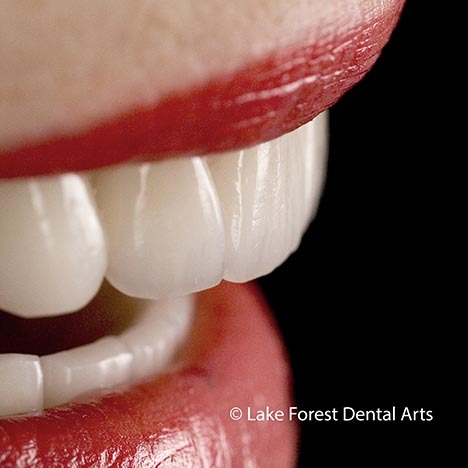
When deciding the best course of treatment, it is appropriate to examine the advantages and disadvantages of bridgework.
When replacing a lost tooth, patients can choose from a number of corrective options that look and feel completely natural. One of the the best options for replacing a tooth is getting a permanently attached dental bridge. This popular treatment choice is easy and fast. It is usually only a two step procedure. There are some disadvantages of dental bridges that are important to mention when making a treatment decision.
First, what is a Dental Bridge?
Dental bridges do what the name implies. They bridge the gap created by one or more missing teeth. A dental bridge is made of two or more crowns for the teeth on either side of the gap. Those teeth on opposite sides of the gap are referred to as anchor teeth or abutment teeth. The artificial teeth or pontics will replace the gap. Pontics can be manufactured from porcelain, gold, alloys, or an array of materials and metals. Dental bridges are supported by dental implants or natural teeth.
The procedure used to place a tooth bridge in the mouth is a relatively pain free and easy procedure. You will first be numbed and your teeth surrounding the gap will be filed. After the filing of those teeth, the crowns will be placed on them. Those crowns are now a support for the artificial tooth that will replace the gap. Finally, the artificial tooth usually made of porcelain, or another durable material, will be placed in the gap. There are very few disadvantages of dental bridges. Your new teeth will look, feel, and function like natural teeth.
All types of bridges are able to:
- Restore correct and comfortable biting and chewing
- Help with a smile
- Uphold the shape of the face of a patient
- Help to distribute the forces in a bite
- Prevent remaining teeth from moving out of their position
Why do I need to replace that tooth?
Whether you’re missing just one tooth in the back of your mouth, or you’ve lost all of your teeth, replacing missing teeth is imperative for proper overall oral function. Research shows that people who do not replace a missing tooth are likely to lose more teeth within four years. The more you know about the options available to enhance your smile, the more informed decision to be made.
Potential Problems or Disadvantages of Dental Bridges
In most cases, bridges remain secure once they are placed. However, as with any restorative or corrective dental treatment, there may be issues that arise. Your dentist can provide you with a complete description of the treatment and aftercare.
Some of the disadvantages of dental bridges include:
Required drilling of neighbor teeth:
One of the major cons of dental bridges is the anchor teeth that eventually hold the bridge in place require crown preparations. Better dentists always look for the most conservative approach. Drilling down perfectly healthy teeth is discouraged. When considering what restorative option is best for their patients, dentists will look at how much previous dental work has been done to the anchor teeth. A bridge is a perfect option if the surrounding teeth already have crowns or large fillings. If the patient is young and the possible anchor teeth are perfect, then dental implants are considered.
Dislodging:
Although it can be stressful to have any restoration fall out of your mouth, it is easy to fix. In such instances, your dentist will be able to reattach your tooth bridge, while providing you with the information you need, ensuring future stability. It is uncommon but, it is possible for your restoration to come loose from an anchor tooth or teeth. The doctor will also thoroughly examine your bite and provide the best course of action for you.
Sweet Sensitivity:
Some patients experience sweet sensitivity after receiving their new tooth replacement. This is not a normal disadvantage of a dental bridge. It usually implies that there is leakage or that it doesn’t fit properly. If your bridge is poorly fitted, you may need to have it replaced. If this sensitivity persists and your dentist will not address it, consider a second opinion.
Breakage:
The anchor teeth holding your bridge need to be strong. Two teeth doing the work of three puts more stress on the roots. If the anchor teeth are badly broken down or have already had root canals, they be too weak to support anything. Porcelain fused to metal bridges are stronger than all porcelain versions.
Gum disease and bone loss:
Oral hygiene can be more difficult depending on the design of your restoration. More sophisticated designs are easier to clean but cost more. Generally speaking, patients with a dental bridge have a slightly higher risk of getting gum disease. With regular brushing, flossing and bi-annual checkups, the chances decrease.
Chewing or biting sensitivity:
Shortly after the placement of a dental bridge, some patients have reported increased sensitivity to cold foods and beverages. While this side effect usually subsides within a few weeks, it may be one that lasts long-term for some patients. This can occur when bite issues or night grinding is present. If you are experiencing sensitivity to cold foods, have your dentist check your bite first. Patients who grind their teeth may need a night guard.
Learn more about your dental options for replacement teeth
The choice between a bridge and an implant can be a difficult one. If you would like a second opinion to know more about the positives and disadvantages of dental bridges, we would be happy to meet with you. Dr. Fondriest focuses on comprehensive esthetic, corrective, and restorative dentistry. Furthermore, he has the skill set to create long-lasting, durable, and aesthetically pleasing dental treatments that provide confidence to patients. Contact us for an appointment today.
Drs. Fulreader and Fondriest are Nationally recognized and highly sought after cosmetic dentists serving clients from throughout the United States
